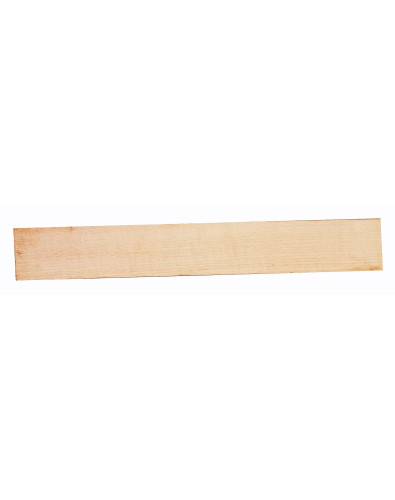Sycamore
Sycamore is always a synonym of a brilliant acoustic sound, a great density and the perfect rigidity for an instrument fingerboard. Although Spruce is the only wood which can lead the efficiency of Sycamore, Spruce is not so rigid as Sycamore, what makes Sycamore even a better option for classic guitar fingerboards.
Sycamore bears without any problem the tension and the impacts that this part of the instrument has to support. On the other hand, other advantage is the high and easy availability of this wood.
Don’t think it more and discover the great beauty and definition of Sycamore fingerboards for classic guitar that we have in Maderas Barber.
BOTANIC NAME: Acer pseudoplatanus.
COMMON NAMES: Sycamore, Maple.
ORIGIN: Central Europe, Eastern Asia.
DESCRIPTION: Density 640 kg/m3. Sapwood colour ranges from almost white, to a light golden or reddish brown, while the heartwood is a darker reddish brown. Grain is generally straight, but may be wavy. Has a fine, even texture.
RECOMMENDATIONS: Fairly easy to work with both hand and machine tools, though it has a tendency to burn when being machined with high-speed cutters such as in a router. Turns, glues, and finishes well, though blotches can occur when staining, and a pre-conditioner, gel stain, or toner may be necessary to get an even colour.
DRYING: Allow air dry but can cause spots and colour alterations. It is important to dry it quickly to keep the white colour.
USES: Guitar , backs and sides, bindings and fingerboards.


